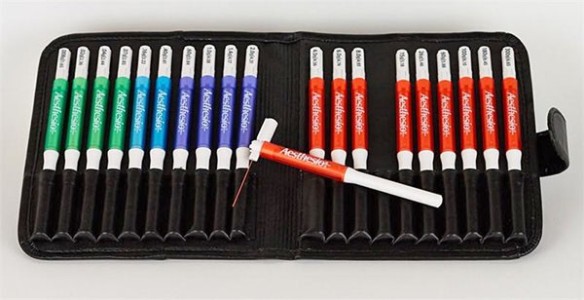Authors
B. Michot, S. Bourgoin, V. Kayser, M. Hamon.
Lab
INSERM U894-CPN, Paris, France
Journal
European Journal of Pain
Abstract
Background
Convergent data showed that neuropathic pain has specific characteristics at cephalic versus extra-cephalic level, where single-targeted drugs differentially alleviate pain. Because the novel analgesic drug, tapentadol, is acting at two targets, μ-opioid receptors (as agonist) and noradrenaline reuptake (as inhibitor), we tested its effects on neuropathic pain at both cephalic and extra-cephalic levels.
Methods
Sprague-Dawley rats underwent unilateral constriction injury (CCI) to the infraorbital nerve (ION; cephalic territory) or the sciatic nerve (SN; extra-cephalic territory), and alleviation of nerve lesion-induced mechanical allodynia/hyperalgesia was assessed after acute or repeated (for 4 days) treatment with tapentadol compared with morphine and/or reboxetine (noradrenaline reuptake inhibitor) 2 weeks after surgery. Possible changes in the expression of the neuroinflammatory markers activating transcription factor 3 (ATF3), interleukin-6 (IL-6) and brain-derived neurotrophic factor (BDNF) by repeated tapentadol treatment were quantified by real-time reverse transcription polymerase chain reaction in ganglia and central tissues.
Results
Acute administration of tapentadol (1–10 mg/kg, i.p.) significantly reduced allodynia in both CCI-SN and CCI-ION rats. Although morphine (3 mg/kg, s.c.) or reboxetine (10 mg/kg, i.p.) alone was only marginally active, the combination of both drugs produced supra-additive effects like those observed with tapentadol. In contrast to repeated morphine whose effects vanished, the anti-allodynic effects of tapentadol remained unchanged after a 4-day treatment. However, the latter treatment with tapentadol did not affect nerve lesion-evoked overexpression of ATF3, IL-6 and BDNF transcripts.
Conclusions
The dual synergistic pharmacological properties of tapentadol, which result in clear-cut anti-neuropathic pain effects at both cephalic and extra-cephalic levels, probably involve mechanisms downstream of nerve injury-induced neuroinflammatory reaction.
BIOSEB Instruments Used
Von Frey Filaments (Bio-VF-M)
Source :

 Pain - Thermal Allodynia / Hyperalgesia
Pain - Thermal Allodynia / Hyperalgesia Pain - Spontaneous Pain - Postural Deficit
Pain - Spontaneous Pain - Postural Deficit Pain - Mechanical Allodynia / Hyperalgesia
Pain - Mechanical Allodynia / Hyperalgesia Learning/Memory - Attention - Addiction
Learning/Memory - Attention - Addiction Physiology & Respiratory Research
Physiology & Respiratory Research











![Dynamic Weight Bearing 2.0 – Postural Module [Add-on]](https://bioseb.com/733-home_default/dynamic-weight-bearing-20-add-on-postural-module.jpg)
























 Pain
Pain Central Nervous System (CNS)
Central Nervous System (CNS) Neurodegeneration
Neurodegeneration Sensory system
Sensory system Motor control
Motor control Mood Disorders
Mood Disorders Other disorders
Other disorders Muscular system
Muscular system Joints
Joints Metabolism
Metabolism Cross-disciplinary subjects
Cross-disciplinary subjects CONFERENCES & MEETINGS
CONFERENCES & MEETINGS 